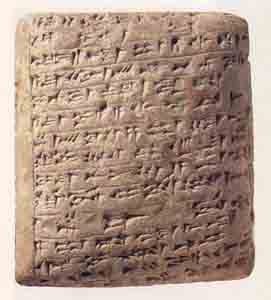Image Details

British Museum
“Message of Lab’ayu, your servant. I fall at the feet of the king, my lord.” Written by a faithful Canaanite vassal to the Egyptian throne, these words were inscribed in Akkadian cuneiform on one of the Amarna letters, the cache of 382 clay tablets discovered at Tell el-Amarna beginning in 1887. This letter suggests that though Lab’ayu’s city was attacked, he subdued his aggressors and held them captive. In response to a previous letter from the Egyptian crown, perhaps suggesting that Lab’ayu instigated the fighting, the vassal flatly denies the accusation: “When an ant is struck, does it not fight back and bite the hand of the man that struck it?”
Most of the Amarna letters were sent to the Egyptian throne by either the vassal rulers of Syria-Palestine or the dominant powers of western Asia (the Assyrian and Babylonian kings, for example). Though most tablets were inscribed in Akkadian, others were written in the languages of the Assyrians, Hittites and Hurrians. Commenting on political conditions, social customs, trade relations, even diplomatic marriages, the Amarna tablets shed light on how the Egyptians ruled Canaan in the 14th century B.C.E.
